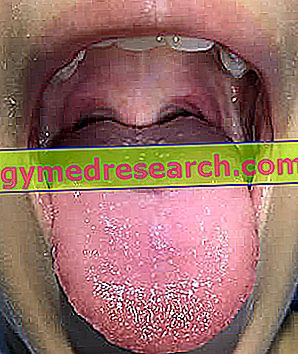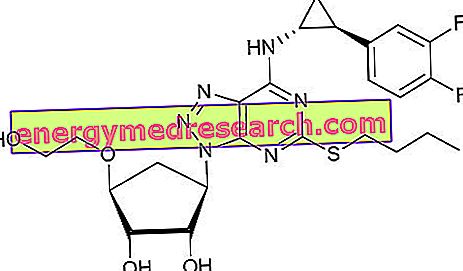Scarlet fever in children
Scarlet fever is an infectious disease triggered by the group A beta-hemolytic streptococcus bacterium.
Scarlattina and children are closely linked to each other, due to the fact that the latter are the preferred target of the first; to be precise, the favorite targets of scarlet fever are children aged between 3 and 10 years.
Why are the 3-10 year-old's favorite targets for scarlet fever?

From this information, we can therefore guess that individuals younger than 3 years and individuals over the age of 10 are mostly exempt from scarlet fever, as they have adequate immune defenses. In fact, it's just like this:
- Infants and subjects under the age of 2 can rely on anti-scarlet fever antibodies, which the mother passes through breast milk;
- People over the age of 10 are in possession, in more than 80% of cases, of a sufficiently mature immune system with antibodies to group A beta-hemolytic streptococcus.
Group A beta-hemolytic streptococcus, scarlet fever and other infections
Also known as Streptococcus pyogenes, group A beta-hemolytic streptococcus is a very common Gram-positive bacterium, which, worldwide, is responsible for at least 700 million infections each year.
Mainly transmitted via aerosols, group A beta-hemolytic streptococcus can cause, in addition to scarlet fever in children and in humans in general, very common forms of pharyngitis and skin infections, such as impetigo, erysipelas, cellulitis, necrotizing fasciitis, etc.
What is transmission via aerosol?
The transmission via aerosol of an infectious disease implies that the infection of a new host occurs through the droplets of infected saliva (therefore containing the pathogenic agent responsible for the infection), emitted by a sick person during sneezing, coughing or when speaks.
Infectious diseases transmitted via aerosols make overcrowded places ideal environments for the spread of the causative pathogen.
Symptoms
Symptoms of scarlet fever in children
The symptoms of scarlet fever in children aged 3-10 are the classic symptoms that include all medical treatises and on-line articles, related to scarlet fever.
In more concrete terms, this means that, in children of the age considered, scarlet fever causes:
- A rash (or rash) characterized by scarlet red dots and mottles, very close and close to each other and slightly raised, which starting from the neck, armpits and groin area end up affecting the whole body a little (within 24 hours), except for the anatomical areas of the nose, mouth and chin;
- The formation of a whitish patina on the tongue ( white strawberry tongue ), which in a few days changes color and becomes red ( raspberry tongue );

- A process of widespread desquamation, which takes the place of the exanthem described above;
- Fever at 38 ° C;
- Sore throat;
- Abdominal pains;
- Tachycardia;
- Headache.
POSSIBLE COMPLICATIONS OF THE SCARLATTINA IN CHILDREN
Before the discovery of antibiotics, infants with scarlet fever were victims of infrequent complications, such as severe sinusitis, pneumonia, meningitis, septicemia, encephalitis, endocarditis, rheumatic fever and glomerulonephritis, whose final outcome could also be the death .
Today, thanks to the wide availability of drugs against group A beta-hemolytic Streptococcus, the aforementioned complications are fortunately rare and the risk of death is, equally fortunately, very low.
What organs and systems can be affected by the complications of scarlet fever?
- Tonsils
- Lungs
- Kidneys
- Central nervous system
- Blood
- Heart
Diagnosis
Diagnosis of scarlet fever in children
Scarlet fever in children is easily diagnosed by observation and critical analysis of symptoms, in other words through physical examination and medical history .
In some dubious or equivocal circumstances (eg: modest exanthema, fever and other typical symptoms absent or just mentioned), it may happen that the doctor has to resort to a more detailed test of the two mentioned above, the so-called pharyngeal swab .
FARINGEO BUFFER: WHAT IS IT?
The pharyngeal swab is a diagnostic test that allows to definitively clarify if a certain suffering of the throat is linked or not to a determined pathogenic microorganism.
Briefly, it involves rubbing the tonsils and the pharyngeal mucosa with a special cotton bud, in order to take some cells to be analyzed later in the laboratory.
Care
Scarlet fever treatment in children
Treatment of scarlet fever in children includes:
- Administration of antibiotics for at least 10 days;
- Absolute rest in bed until exhaustion of fever;
- The isolation of the patient, especially during the first days of the illness, to avoid transmission of the infection to family members and peers (eg school friends, playmates, etc.).
To these cures, we must add then a series of valid remedies against the symptomatology, which is generally the family doctor to remind parents of children with scarlet fever.
Important note
Regarding the isolation of the scarlet fever patient at school age, Italian law is clear, stating that readmission to school is possible after 2 days from the start of antibiotic therapy.
This recommendation is justified in several scientific studies, which have established that infants with scarlet fever are still contagious 24 hours after the start of antibiotic administration.
WHICH ANTIBIOTICS TO USE AGAINST THE SCARLATTINA IN CHILDREN?
The antibiotics of first choice for the treatment of scarlet fever in children are the penicillins for oral use or, if the patient is allergic to the latter, the macrolides (eg: erythromycin).
DO CHILDREN CAN DISMISS A SECOND TIME OF SCARLATTINA?
There are several strains of group A beta-hemolytic Streptococcus and each strain produces, in the affected human being, a specific form of natural immunity for that particular strain, but not for others.
All this has the implication that the children affected by scarlet fever, due to a certain group A beta-hemolytic streptococcus strain, may fall ill again with the same infectious disease, if they are exposed to a beta-hemolytic streptococcus strain of group A different from the previous one.
REMEDY TO RELIEVE SYMPTOMS
To alleviate scarlet fever symptoms, it is certainly useful:
- The administration of a painkiller, such as ibuprofen or paracetamol.
Purpose: relieves throat pain and / or fever;
- Drink lots of water .
Purpose : reduces the chances of dehydration related to the presence of fever;
- Humidify the air in the room where the patient is staying, during the illness.
Purpose : it is a relief against the inflammatory and irritative state present in the throat;
- The execution of gargles with salt water.
Purpose : soothes sore throat;
- Consume foods of soft or semi-liquid consistency .
Purpose : to feed a patient whose throat is so irritated as to prevent him from ingesting solid foods;
- Avoid exposing the patient to irritants, such as passive cigarette smoke.
Purpose : prevents healing from being slower than expected.
Prognosis of scarlet fever in children
If the therapy is timely and adequate, scarlet fever in children tends to resolve positively within a few days (7 in general).
In the absence of appropriate antibiotic therapy, healing times are extended (up to 2 weeks) and, moreover, there is a more than concrete risk of complications.
Important note
For optimal healing of scarlet fever, it is essential to scrupulously follow the doctor's instructions regarding antibiotic therapy; in fact, transgressing these indications (eg: interrupting the therapies first, because the patient shows significant improvements) can lead to relapse.
Prevention
Currently, no vaccines are available to prevent scarlet fever.
However, this does not exclude that precautions and precautions exist, capable of reducing the risk of contracting group A beta-hemolytic Streptococcus and the resulting infectious diseases.
Among the precautions and precautions that guarantee a control of the risk of scarlet fever, there are:
- Avoid sharing cooking utensils and food. To justify this foresight is the fact that many bacterial agents, including group A beta-hemolytic streptococcus, survive for a long time on the objects contaminated by them.
- Cover your nose and mouth in case of sneezing or coughing. This is justified in the mode of transmission preferred by group A beta-hemolytic Streptococcus, which as we have seen is precisely the transmission via aerosol.
- Provide for the cleaning of everything that an individual with scarlet fever may have touched.
- Taking care of personal hygiene from the hands. Neglecting personal hygiene exposes you to infections. Therefore, given the low attention of young people towards personal hygiene care, the latter represents a cornerstone of the prevention of scarlet fever in children.




